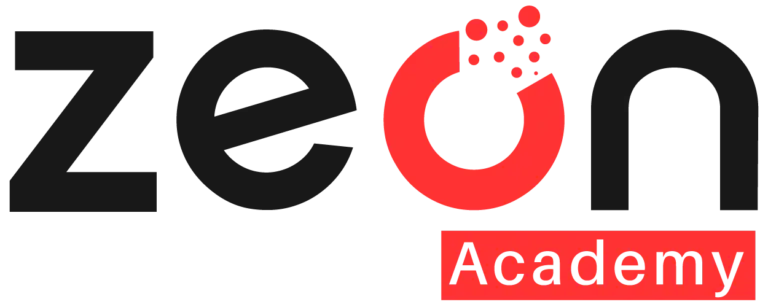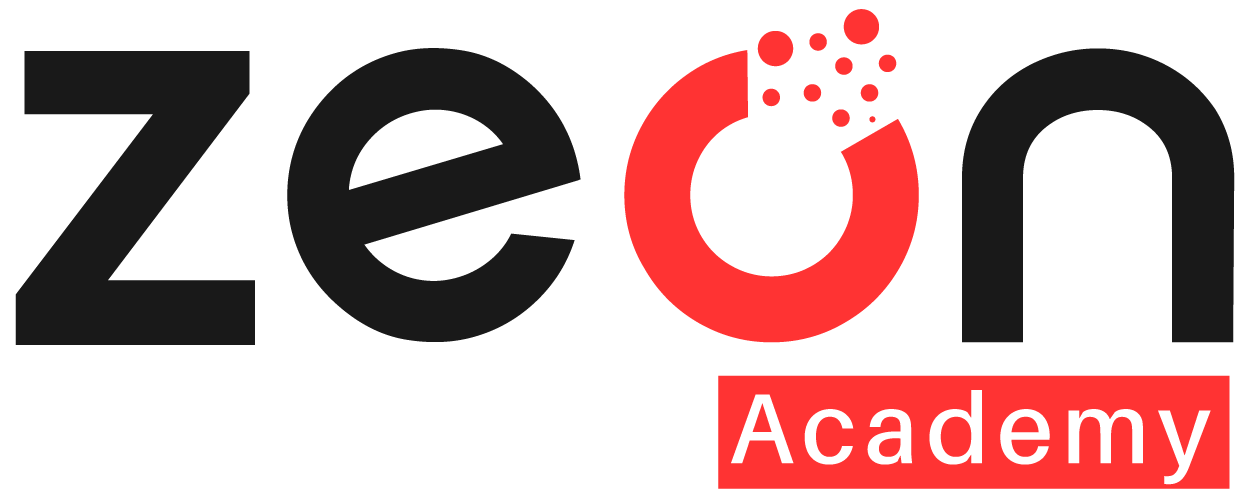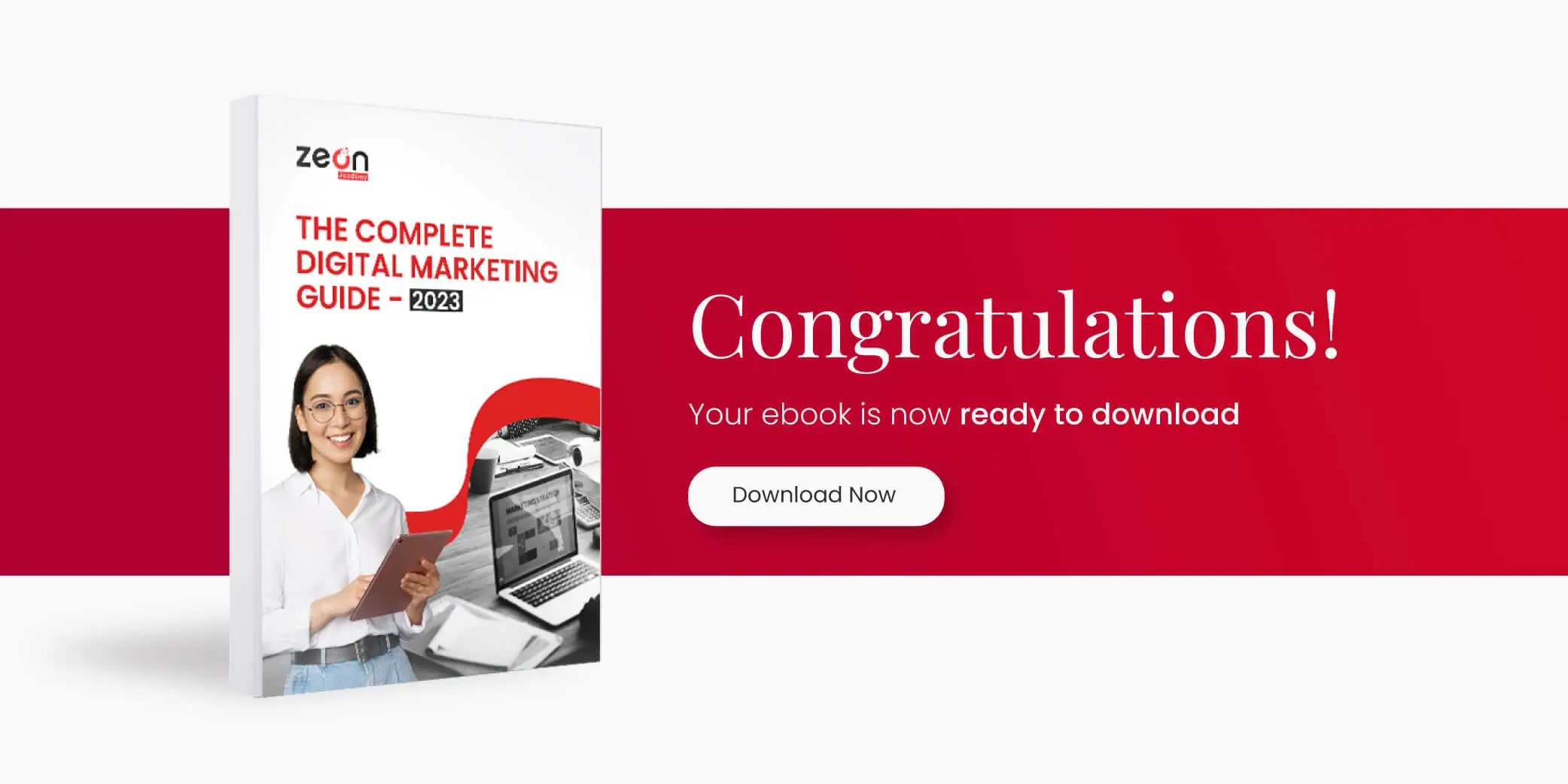2024 SEO Checklist: Your Complete Optimization Guide
In 2024, understanding SEO is important for online success. This SEO Checklist guides you through essential strategies to boost your website’s visibility. From keyword research and on-page optimization to mobile-friendliness and page speed, we’ve got you covered. Learn how to create high-quality content, leverage backlinks, and enhance user experience. Stay ahead with the latest trends, including machine learning and AI-driven SEO techniques.
-
Table of Contents
ToggleSEO Checklists
| Heading | Subheadings |
| Understanding SEO | What is SEO?, Importance of SEO in 2024, The Evolution of SEO |
| Keyword Research and Analysis | Identifying Target Keywords, Using Keyword Tools, Long-Tail Keywords |
| On-Page SEO Optimization | Title Tags, Meta Descriptions, Header Tags (H1, H2, H3, etc.), Keyword Placement, Content Quality |
| Technical SEO | Site Speed Optimization, Mobile-Friendliness, SSL Certificates, XML Sitemaps, Robots.txt File |
| Content Creation and Optimization | Creating High-Quality Content, Updating Existing Content, Content-Length Best Practices |
| Link Building Strategies | Importance of Backlinks, How to Get High-Quality Backlinks, Internal Linking |
| User Experience (UX) and SEO | Site Navigation, Mobile Usability, Page Load Speed, Bounce Rate Reduction |
| Local SEO Practices | Google My Business Optimization, Local Citations, Customer Reviews |
| Monitoring and Analytics | Google Analytics, Search Console, Regular Audits, SEO Performance Metrics |
| SEO Tools and Resources | Essential SEO Tools, How to Use SEO Tools Effectively, Staying Updated with SEO Trends |
| Common SEO Mistakes to Avoid | Keyword Stuffing, Ignoring Mobile Optimization, Duplicate Content |
| Future of SEO | Predicting SEO Trends, Adapting to Algorithm Changes, Importance of Staying Updated |
Understanding SEO
-
What is Search Engine Optimization?
Search Engine Optimization (SEO) is the practice of increasing your website’s visibility to rank higher in search engine results pages (SERPs) and attract more organic traffic.
The task of updating your website to appear higher in search engine results pages (SERPs) is known as search engine optimization, or SEO. It contains a variety of methods and approaches made to increase the reach and visibility of your website and bring in more organic traffic.
-
Importance of SEO in 2024
In 2024, SEO remains a crucial component of digital marketing. With the ever-increasing competition online, businesses must apply effective SEO strategies to stand out and reach their target audience.
-
The Evolution of SEO
SEO has evolved significantly over the years. From simple keyword placement to complex algorithms that consider user experience, mobile-friendliness, and content quality, understanding this evolution is essential for staying relevant in 2024.
Keyword Research and Analysis
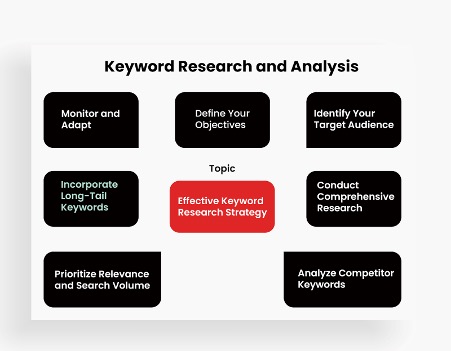
-
Identifying Target Keywords
Pick out the keywords that your target audience types in while they search for products or services that are similar to yours. Use Google Keyword Planner and SEMrush tools to help you in discovering high-volume, relevant keywords.
-
Using Keyword Tools
Utilize keyword research tools to analyze the competition, search volume, and relevance of your chosen keywords. These insights will help you in your content creation and optimization efforts.
Google Keyword Planner: A free tool from Google that provides search volume, competition, and keyword suggestions.
Ahrefs: Offers in-depth keyword analysis, including search volume, keyword difficulty, and competitive analysis.
SEMrush: Comprehensive tool for keyword research, competition analysis, and keyword difficulty.
Moz Keyword Explorer: Provides insights on keyword difficulty, search volume, and organic CTR.
Ubersuggest: A tool with free and paid versions that produces keyword suggestions, search volume, and competition data.
-
Long-Tail Keywords
Focus on long-tail keywords, which are more specific phrases that typically have lower search volumes but higher conversion rates. These keywords help you attract highly targeted traffic.
Eg: “Best digital marketing academy in Kochi”
On-Page SEO Optimization
On-page SEO optimization is very vital to upgrade your website’s search engine rankings and overall user experience. By optimizing elements like title tags, meta descriptions, headers, and content, you can make sure that search engines understand your site’s relevance and quality. Proper keyword usage, internal linking, and high-quality content help attract organic traffic, keeping visitors engaged and reduce bounce rates.
Additionally, optimizing images and ensuring mobile-friendliness improves user experience and site speed, which are critical ranking factors. Ultimately, on-page SEO is the foundation of a successful SEO strategy, driving visibility, credibility, and sustainable growth for your online presence.
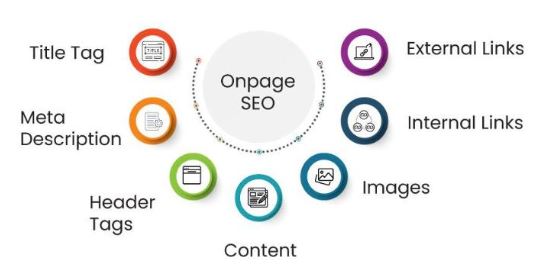
-
Title Tags
Make sure your title tags are convincing and include your primary keywords. Title tags should be between 50-60 characters to avoid being cut off in search results.
-
Meta Descriptions
Write clear and crisp meta descriptions that accurately describe the content of your page and include your target keywords. This snippet can influence click-through rates from the SERPs
-
Header Tags (H1, H2, H3, H4, H5, H6)
Use header tags to build and make divisions in your content to make it easier for search engines to understand and also provide better navigability for users to find the main points in the page. Each page should have one H1 tag, and subsequent subheadings should use H2, H3, etc.
-
Keyword Placement
Strategically place your keywords in the first 100 words of your content, in headings, and throughout the body. Avoid keyword stuffing, as it can incur penalties for your page.
-
Content Quality
High-quality content is king. Make sure your content is informative, engaging, and addresses the pain points of your target audience. Always keep updating the content so that it is fresh and appropriate.
Technical SEO
Technical SEO is critical for guaranteeing that your website not only ranks well in search engine results but also delivers a smooth and comfortable user experience. By focusing on technical aspects such as site speed, mobile responsiveness, structured data, and indexability, you can improve your site’s visibility and accessibility to search engine crawlers. This optimization not only improves your search engine rankings but also increases user satisfaction, ultimately driving more organic traffic to your site. Therefore, integrating technical SEO best practices is of utmost importance for maximizing your online presence and staying competitive in the digital space.
-
Site Speed Optimization
A fast-loading website is an important part of the user experience and it also plays a crucial role in ranking a page. Tools like Google PageSpeed Insights can be used to identify and fix speed issues.
-
Mobile-Friendliness
With the majority of searches coming from mobile devices, confirm your site is mobile-friendly. A fast and responsive design along with optimization for mobile devices are important in achieving success with SEO performance.
-
SSL Certificates
Improve the security of your website with an SSL certificate to protect the user data and improve your website’s credibility and search engine ranking as HTTPS is also a positive ranking factor.
-
XML Sitemaps
Develop and upload an XML sitemap to make search engines index your site more effectively. This document serves as an extensive guideline for your website’s structure and content for search engines.
-
Robots.txt File
Use a robots.txt file to decide how search engines will crawl your site. Make certain that this file is correctly built to avoid blocking important pages from being indexed.
Content Creation and Optimization
Creating SEO optimized content involves creating articles, blogs, or web pages that are not only engaging and informative but also strategically structured to rank well in search engine results. This process includes researching relevant keywords, adding them naturally throughout the content, and ensuring readability and user engagement. By focusing on high-quality, original content that addresses user queries and interests, businesses can attract more organic traffic and improve their online visibility.
-
Creating High-Quality Content
Produce valuable content that deals with your audience’s questions and answers all their pain points. Use a mix of media formats such as text, images, and videos to make your content more engaging to the target audience.
-
Updating Existing Content
Review and upgrade your current content regularly to keep it relevant and accurate. This method can improve your rankings and bring in more traffic.
-
Content-Length Best Practices
Search engines agree more with longer contents and they tend to rank better in search results. Always make sure to produce in-depth articles that thoroughly cover a topic, but also ensure that they are readable and well-structured so as to maintain user engagement.
-
Link Building Strategies
Link building is a major tactic in SEO that focuses on getting links from other websites to yours. These links serve as votes of confidence in your content, signaling to search engines that your site is credible and valuable. Effective link building involves producing valuable content that organically attracts links from other websites. It also includes outreach efforts to collaborate with relevant sites, such as guest posting or partnerships, and utilizing social media and industry directories to amplify your content’s visibility.
-
Importance of Backlinks
Backlinks from reputable sites serve as trust indicators to search engines that your content is credible and valuable. Focus on acquiring high-quality backlinks to improve your site’s credibility in search rankings.
-
How to Get High-Quality Backlinks
Engage in guest blogging, create shareable content, and build relationships with influencers in your industry to acquire high-quality backlinks.
-
Internal Linking
Use internal links to attract visitors to relevant content pages within your website. This approach helps improve a user’s site navigation and helps search engines understand your content’s structure.
User Experience (UX) and SEO
User Experience (UX) and SEO are closely interconnected aspects of website optimization. UX focuses on making sure that the visitors have a positive and smooth and easy experience when interacting with your site, while SEO aims to increase your site’s visibility and ranking in search engine results.
When UX and SEO are aligned, your website becomes not only easier to navigate and more enjoyable for users but also more likely to perform well in search engines. Factors such as site speed, mobile responsiveness, intuitive navigation, and engaging content all contribute to a better UX, which can lead to lower bounce rates, longer visit durations, and higher conversion rates.
-
Site Navigation
Ensure your site’s navigation is intuitive and user-friendly. A well-organized site structure helps visitors find what they’re looking for and keeps them on your site longer.
-
Mobile Usability
Optimize your site for mobile users by ensuring it loads quickly, has a responsive design, and offers easy navigation on smaller screens.
-
Page Load Speed
Improve your page load speed by optimizing images, using browser caching, and minimizing the amount of code. Fast-loading pages improves user satisfaction and experience and contributes positively to SEO.
-
Bounce Rate Reduction
Reduce bounce rates by creating engaging, relevant content that matches user intent. Use clear calls to action and ensure your site is easy to navigate.
User Interface (UI) and SEO
An attractive and user-friendly website design (UI) is essential for both keeping visitors happy (UX) and getting your site noticed by search engines (SEO).
When UI and SEO are in harmony, your website becomes not only more attractive and user-friendly but also more likely to perform well in search engines. Elements such as clear design, intuitive layout, and accessibility all contribute to a superior UI, leading to better user engagement, longer visit durations, and higher conversion rates.
-
Visual Design
If your website looks good and is easy to use, people will enjoy browsing it more. They’ll find what they need faster, stay on your site longer, and have a better overall experience.
-
Consistent Branding
Ensure your website maintains consistent branding across all pages. This creates a cohesive and professional appearance, building trust with your visitors and making your site more memorable.
-
Accessibility
Make sure your website is user-friendly for everyone, including those with impairments.To guarantee that everyone can access and browse your site with ease, make use of appropriate headers, alt text for pictures, and keyboard navigation.
-
Interactive Elements
Incorporate interactive elements like buttons, forms, and videos to engage users and keep them on your site longer. These elements should be easy to find and use, adding to a smoother and more enjoyable user experience.
Local SEO Practices
Local SEO practices focus on optimizing your website’s visibility to attract more business from a particular relevant local search results. This is very important for businesses with physical locations or those targeting customers in a specific geographic area.
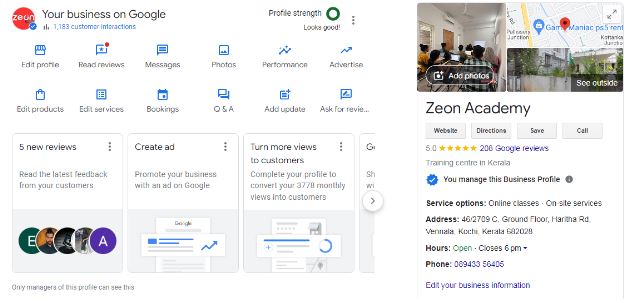
-
Google My Business Optimization
Optimize your Google My Business listing with accurate information, high-quality images, and customer reviews. This approach helps improve your position in the local search rankings.
-
Local Citations
Make sure your business information is the same across all local business listings and citation sites. Being consistent helps build trust with search engines.
-
Customer Reviews
Ask satisfied customers to share their positive reviews on Google and other review platforms. Positive reviews can boost your local SEO efforts and attract more potential customers.
Monitoring and Analytics
Monitoring and analytics are crucial in SEO for several reasons. They provide insights into how your website is performing, what strategies are effective, and where improvements can be made.
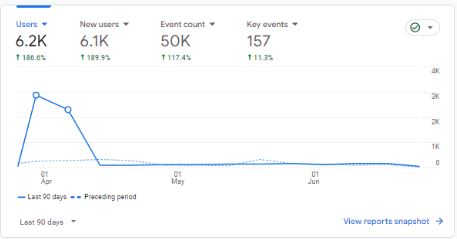
Performance Evaluation: Analytics tools like Google Analytics track key metrics such as organic traffic, bounce rate, average session duration, and conversion rates. By monitoring these metrics regularly, you can judge the effectiveness of your SEO efforts and identify areas that need attention.
Keyword Performance: Monitoring keyword rankings and performance helps you understand which keywords are driving traffic and conversions. This allows you to optimize your content and targeting strategies accordingly.
Identifying Trends: Analytics help you identify trends in user behavior, such as changes in search queries, traffic patterns, or device preferences. This insight allows you to adapt your SEO strategies to meet the ever changing user needs and wants.
Competitor Analysis: Monitoring competitor performance can provide valuable insights into their SEO tactics, keywords they are targeting, and areas where you can differentiate and improve.
ROI Measurement: Analytics allow you to measure the return on investment (ROI) of your SEO efforts by tracking conversions and revenue made.
-
Search Console
Google Search Console yields the much needed insights into your website’s search performance. Use this tool to monitor indexing status, analyze search queries, and identify possible technical problems.
-
Regular Audits
Conduct regular SEO audits to identify and fix technical issues, improve site performance, and ensure your SEO strategies are effective.
-
SEO Performance Metrics
Track key SEO performance metrics such as organic traffic, bounce rate, conversion rate, and keyword rankings to measure the success of your efforts.
SEO Tools and Resources
-
Essential SEO Tools
Invest in essential SEO tools like Ahrefs, Moz, Screaming Frog and SEMrush to streamline your optimization efforts. These tools offer valuable insights and data to upgrade your strategies.
-
How to Use SEO Tools Effectively
Learn how to use SEO tools effectively by learning their features, setting up reports, and analyzing data. Proper tool usage can significantly increase your SEO performance.
-
Staying Updated with SEO Trends
SEO is constantly evolving. Stay updated with the latest trends, algorithm changes, and best practices by following industry blogs, attending webinars, and joining SEO communities.
Common SEO Mistakes to Avoid
-
Keyword Stuffing
Don’t overload your content with keywords – search engines don’t like it and might punish you. Write naturally, using relevant keywords where they make sense in your text.
-
Ignoring Mobile Optimization
Neglecting mobile optimization can hurt your rankings. Make sure your site is fully optimized for mobile devices to provide a smooth user experience.
-
Duplicate Content
Duplicate content on different pages can confuse search engines and negatively affect your rankings. Keep everything fresh and make sure all the written content is unique and original to avoid this issue.
Future of SEO
-
Predicting SEO Trends
Stay ahead by predicting and adapting to future SEO trends. Focus on user experience, mobile optimization, and high-quality content to maintain your rankings.
-
Adapting to Algorithm Changes
Search engine algorithms are constantly changing. Stay informed about these changes and adjust your SEO strategies accordingly to stay competitive.
-
Importance of Staying Updated
The SEO landscape is ever-changing. Staying updated with the latest tricks, trends, tools, and best practices is important if you want long-term success.
FAQ’s
Ans) The most significant feature of SEO in 2024 is providing a high-quality user experience, which includes fast loading times, mobile optimization, and relevant content.
Ans) Regularly updating your website’s content is important. Try to review and update the content at least every six months to make sure it remains relevant and accurate.
Ans) Mobile optimization is important because a significant portion of web traffic comes from mobile devices. A site which is mobile-friendly builds on user experience and helps with search engine rankings.
Ans) Improve your site’s loading speed by optimizing images, using a content delivery network (CDN), minimizing code, and leveraging browser caching.
Ans) Long-tail keywords are specific, longer phrases that users usually search for. They are important because they often have less competition and produce higher conversion rates.
Ans) You can get high-quality backlinks by creating valuable content, guest blogging, building relationships with influencers, and leveraging social media.
